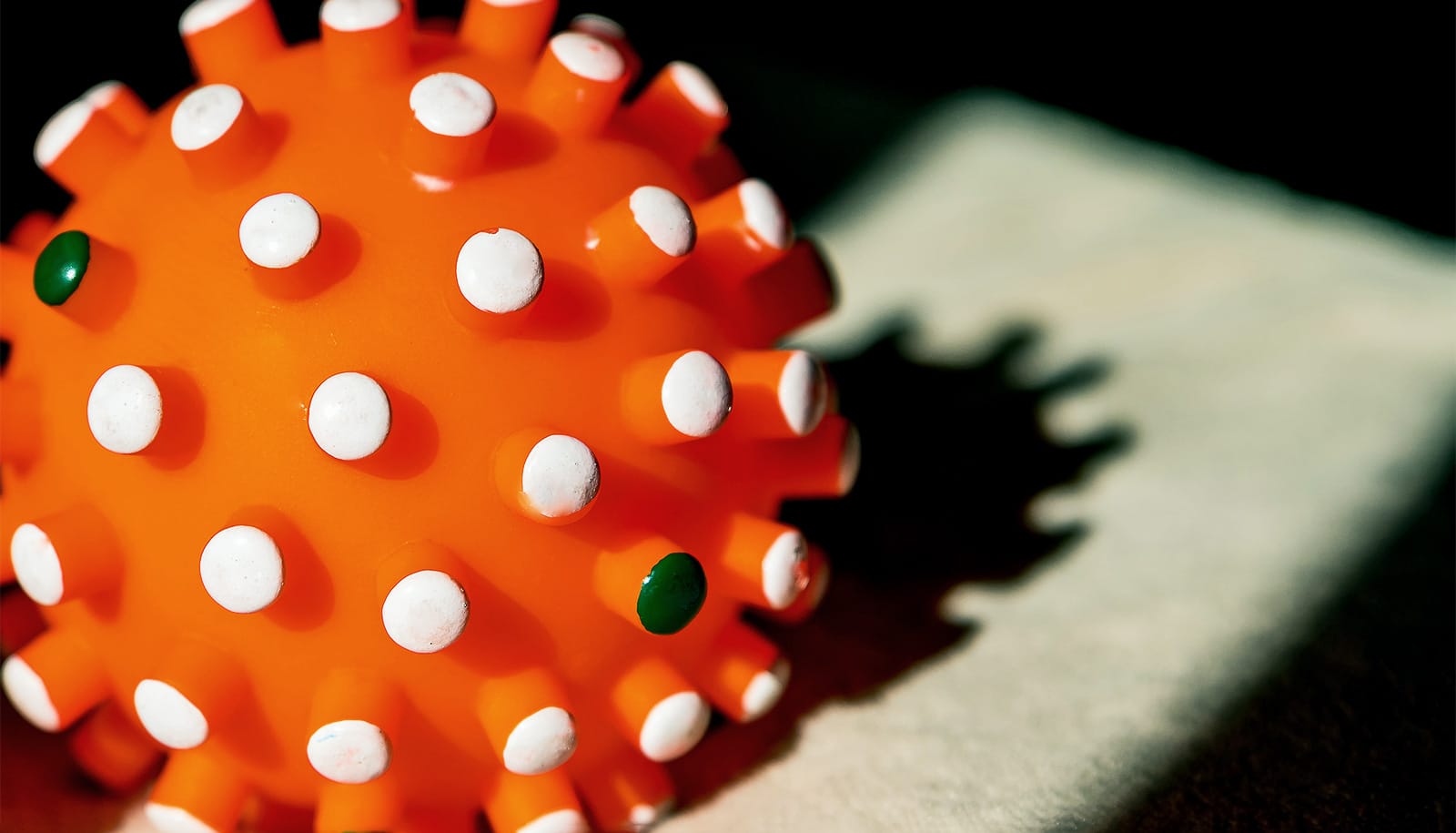A study has captured new views of the intricate molecular dance between our cells and the COVID-19-causing virus, SARS-CoV-2.
The findings could inform the development of more effective vaccines as additional variants emerge.
Published in the journal Science, the study reveals how SARS-CoV-2 uses its spike protein, pointy molecules that stud the virus’s outer surface, to grab onto and drag itself to touch the surface of human cells and eventually deliver its viral genomes into cells.
The study was carried out by researchers at Yale School of Medicine (YSM), Northeastern University, and Rice University.
The virus’s attachment to cells via its spike protein is the first key step for the virus to fuse with and infect the cells. Current COVID-19 vaccines work by blocking the virus from attaching to cells; the new study shows details of how certain human antibodies can block the next step, virus-to-cell fusion.
This is important, because as effective as the vaccines have been for millions of people, they could come up short against future SARS-CoV-2 variants due to the virus’s rapid mutation.
“Understanding how these antibodies work to block the fusion machine can help us understand how to better design immunogens [for better vaccines],” says Michael Grunst, the first author on the study and a doctoral student working in the lab of Walther Mothes, a professor of medicine at the Yale School of Medicine.
The viral spike protein is made of two parts: one that binds to the human protein ACE2, which sits on the surface of many kinds of human cells and is the virus’s portal for infection, and another part that changes its shape to move the virus closer to the human cell once it is attached. Bringing the virus and cell very close together is necessary for infection, as the membranes of the virus and the cell need to fuse for the virus to enter the cell.
COVID-19 vaccines now on the market were designed to include the ACE2-binding portion of the spike protein, which is prone to pick up mutations as the virus evolves. Even with yearly updates to the vaccine, COVID vaccine designers won’t be able to keep up with mutations that have occurred in this part of the protein. But a different potential target of opportunity—the shape-changing part of the protein—is very unlikely to mutate, because its structure is so critical for narrowing the gap between virus and cell.
The stable structure in that area suggests future vaccines that target it might be universally effective against more dangerous SARS-CoV-2 variants, and could even work against other coronaviruses, such as the viruses that cause Middle East Respiratory Syndrome (MERS) or the original Severe Acute Respiratory Syndrome (SARS), says Mothes.
Antibodies against this region are effective against a wide variety of SARS-CoV-2 variants, including so-called variants of concern, which are newly evolved variants that may be more infectious or more transmissible than the original virus.
To simulate binding between the proteins that is close to real-life conditions, the Yale researchers used virus-like particles coated with either the spike protein or ACE2. They imaged the interaction between the two proteins using a microscopy technique known as cryogenic electron tomography, or cryo-ET, which captures detailed 3D structures of molecules. Their collaborators at Northeastern and Rice then used the imaging data gathered by the Yale team to build computational simulations of the entire process.
The cutting-edge imaging technique combined with the computer models allowed the team to take images of the spike-ACE2 interaction and the following fusion intermediates that had not been seen before with that level of detail. For example, they were able to see new details of the spike protein’s dramatic shape change—it looks somewhat like a jackknife folding shut, as Grunst described it.
“This is the first time we’ve seen the structure of the intermediate stages of the spike during fusion,” says Wenwei Li, associate research scientist in the Mothes Laboratory, who led the study along with Mothes and Paul Whitford, associate professor of physics at Northeastern. “We found that this region is even more dynamic than what we thought before.”
The researchers also captured images of the two proteins together with antibodies that bind to the shape-changing region of the spike protein. With the computer simulations, the team was able to show that the antibody blocks the spike protein from folding in on itself, preventing it from pulling the virus and cell membranes close enough to fuse.
They also found that antibodies bind to a transient folded form of the spike protein, perhaps explaining why these antibodies are naturally relatively rare—our immune systems only have a short window of time of exposure to this particular shape of the protein. The details about the shapes the spike protein undergoes as it folds could help vaccine developers pick the ideal part of the virus to stimulate the production of more of these antibodies, Mothes says.
“COVID variants can escape our immune systems and vaccines by mutating, but these fusion machines have only one pattern of how to do their job,” he says.
“It’s a hardwired, conserved machine; you can’t change them. So this is why understanding more about how that mechanism works means we can learn more about their vulnerability, to [use vaccines to] block this process with antibodies.”
Source: Yale



